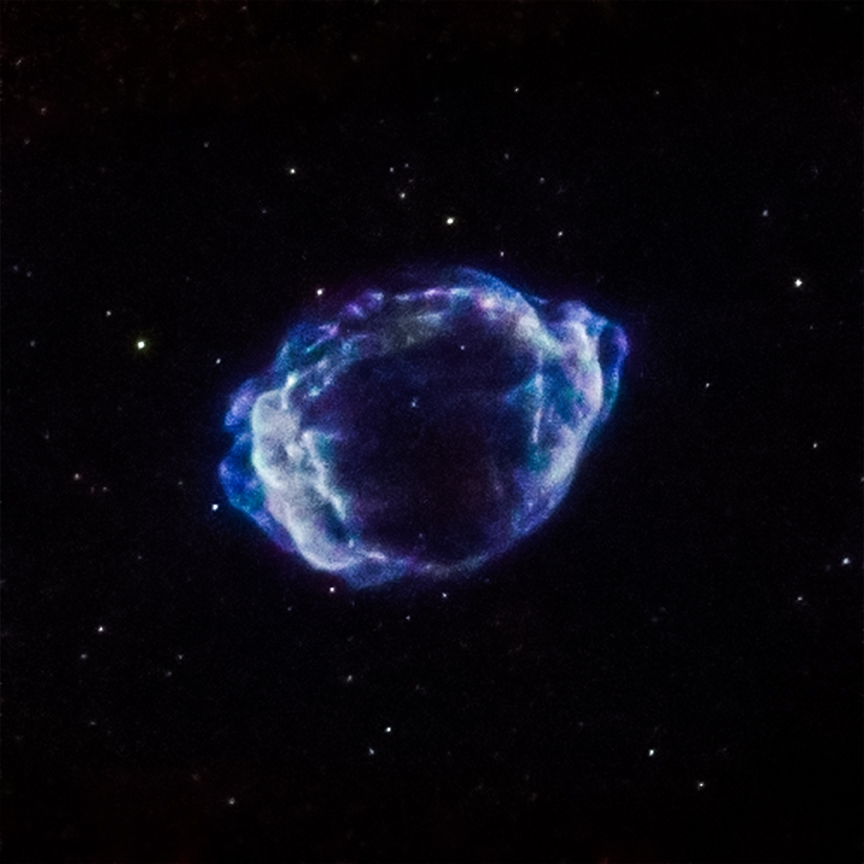
Type Ia supernovae, have been used to measure distances in space and have helped astronomers to measure the accelerating expansion of the Universe. Since the brightness of these objects is known, scientists can estimate their distance by analyzing how dim they appear. Type Ia supernovae occur in binary systems but there are two possible mechanisms that can trigger such an explosion. In both cases one of the stars is a white dwarf that accumulates material from a companion star, but the companion star can be either a giant star or another white dwarf. Knowing the exact triggering mechanism is essential for astronomers, since if there are more than one mechanism, the contribution from each mechanism may change over time. If this is the case then scientists need to recalibrate some of the ways they use to measure distances in cosmology.
G1.9+0.3 belongs to the Type Ia category and has been identified as the remnant of the most recent supernova in our Galaxy that occurred about 110 years ago. Using data from NASA’s Chandra X-ray Observatory and the NSF’s Jansky Very Large Array astronomers observed that the X-ray and radio brightness of the object increased with time. This indicates that this supernova explosion was triggered by two white dwarfs. It is, however, unclear if this result implies that all Type Ia supernovae are caused by white dwarf collisions. More observations from similar objects in nearby galaxies will help us better understand what causes these impressive explosions and improve our understanding regarding the expansion rate of our Universe.
Publication: Chakraborti et al. 2016
Source: Chandra
